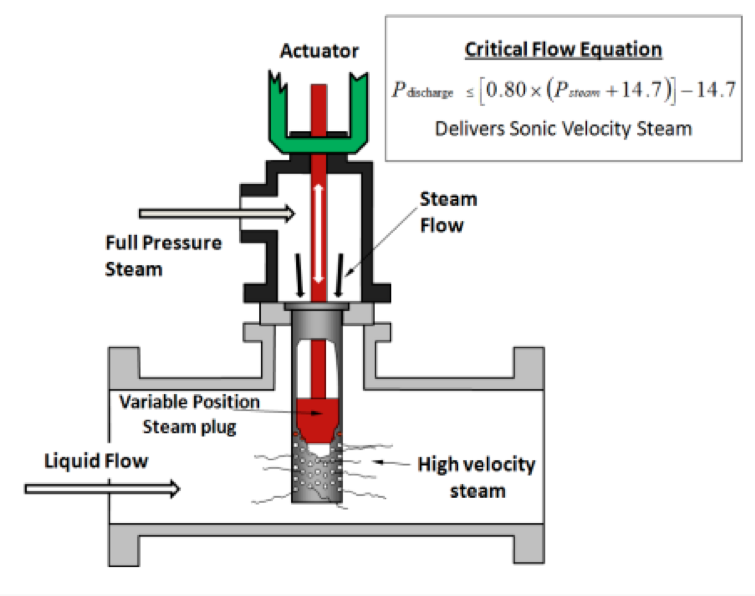
Application Profile: Lime Slaker Heating for Flue Gas Desulphurization
Power companies are faced with increased emission control standards. Essentially they need to reduce emissions that are released through their stacks. One key environmental regulation is to control sulfur dioxide (SO2), Sulfur Trioxide (SO3), and Nitrogen Oxide (NOx) emissions via Flue Gas Desulphurization (FGD). FGD can either be accomplished via Wet FGD Scrubbing or Semi-Dry FGD process. For coal fired power plants, the addition of lime slurry assists the removal of undesirable emissions in flue gas via the FGD process. Limestone slurry is produced by crushing the limestone typically in a ball mill and then water is added. The reaction occurs in an agitated vessel known as a Slaker at high temperatures (185 - 210°F) and constant agitation and produces calcium hydroxide. The slaker is often heated by heat exchangers or by sparging steam into the Slaker. The use of external steam control devices to control the steam flow by reducing the steam pressure can lead to excessive steam hammer & vibration. Steam hammer and vibration often result from poor mixing and condensing of the steam.- Lime slaker applications often rely on the chemical reaction to produce the necessary heat for the reaction. Adding hot water to the lime slaker can accelerate the cycle for improved processing times.
- Good temperature control is important to achieve high efficiency in the reaction. Improved reaction reduces lime costs.
- Proper temperatures improve spraying through the spray nozzles.
- Sparging also has a tendency to create non-uniform temperature zones in the slaker, resulting in uneven reactions within the system.
- Spargers may also damage the slaker walls because of the violent condensation process, particularly when coupled with the stress corrosion issues mentioned previously.
- Seasonal temperature changes require turndown capabilities beyond sparger and traditional heating methods
PSX Heater Solution:
A PSX heater can be installed in-line upstream of the slaker. Our Internally Modulated steam control assures rapid & complete condensation of the steam. The tight temperature control (+/- 1 deg F) possible within the PSX heater allows a more uniform reaction, thus reducing lime costs, and allowing for finer tuning of the slaker process. The fast and accurate temperature response of the heater allows the Utility to fine tune the chemistry in the slaker, reducing the chemical usage, and/or the reaction time.Key Direct Steam Injection Benefits
- Precise Temperature Control (typically +/- 1 °F) improves performance
- Reduced Energy Costs over inefficient steam sparging
- No Steam Hammer or Vibration as a result on improved steam condensation
- Reduced Chemical costs by better reaction and process control
- Lower Maintenance and no scale build-up due to the PSX Heater self cleaning design
- High Turndown capability by the PSX Heater allows for seasonal water temp changes
